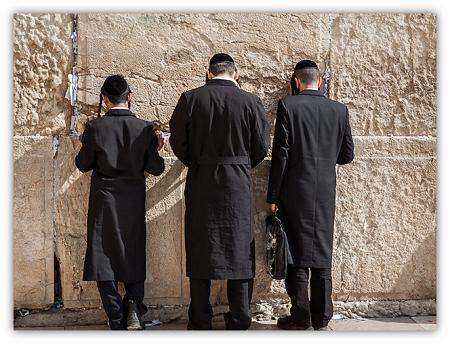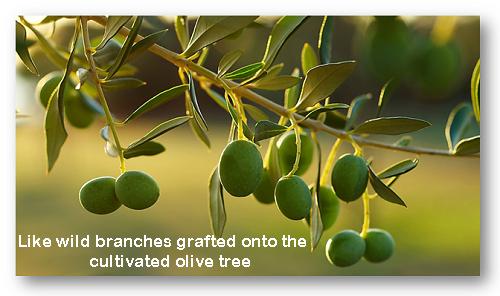Israel and The Church Three Models for the Relationship
Israel and The Church Three Models for the Relationship

How is the Christian church related to Israel? The relationship between Israel and the church appears in many ways to be a very topical theme. Especially now that, on 14 May 2008, the 60th anniversary of Israel’s statehood is to be celebrated, reflection on this relationship is more than necessary.
In the Reformed (Liberated) tradition in which I grew up, however, we have barely started fundamental reflection on this issue. In our tradition a lot of attention (theological as well as practical) has been given to God’s covenant with us,1 but we do not really feel a connection with Israel. To be honest, I have always found this to be a curious contradiction, because when you think about the covenant you simply cannot ignore Israel. A. van de Beek’s fascinating book, De kring om de Messias, provides plenty of stimuli to think through the relationship between Israel and the church.2 In this article I will sketch out three theological models for defining this relationship. I will refer to them as the substitution model, the incorporation model and the fulfilment model.
I realize, of course, that nuances can and should be made with respect to all three models, but for further reflection it is also important to clearly distinguish between various approaches. I therefore refrain from making any nuances, in order to present a sketchy outline of the main approaches circulating within the Reformed tradition.
The Substitution Model – the Christian Church took Israel’s Place⤒🔗
According to the Old Testament the people of Israel were chosen by a holy God. Israel is therefore a holy people. Holiness gives Israel a different status in the world, different from any other nation. According to the substitution model, this privilege of the different status was passed on to the New Testament church after the Holy Spirit was poured out at Pentecost. Having rejected Jesus Christ, God’s only begotten Son, as the Messiah, Israel was replaced by a new ‘people of God’, the Christian church.
The positive element in this approach is that it emphasizes that, after the coming of Jesus the Messiah into this world, Israel cannot continue as it did before, as if nothing had happened. His death and resurrection have indeed changed everything. But there are also three important objections:
- There is too strong a suggestion that Israel is written off for ever. The Christian church, however, has never abandoned the Old Testament. God does not reject his people (Rom.11:1). God’s covenant is a unity, including the old as well as the new dispensation.
- Where do the Jewish Christians, such as the early church in Jerusalem, fit in? We know that James, the brother of the Lord, also called James the Righteous One, visited the temple as a law-abiding Jew until shortly before his death.
- In this model all exclusive claims for God’s people (the only true people) can now be simply applied to the church. But this is only the case through Jesus Christ: the honorary titles in 1 Peter 2:9-10 follow after the call to come to the living Stone!
The substitution model is deficient in that it lacks the notion of the fulfilment of the law and the prophets by the coming of the Messiah into this world. At the same time the Messiah also appears to be the fulfilment of Israel as the ‘son of God’ that failed. It would be truer to say that it is Jesus Christ who came in Israel’s place, i.e. through his substitutionary suffering and death.

There is a variant of the substitution model that partly meets these objections: the ‘continuity model’ or ‘growth model’, which is based on the idea that God’s church grows from childhood to adulthood.3 But in this approach too, there is the suggestion that the ‘Israel period’ is more or less behind us, as a bygone phase of church history. In short, I believe these approaches pay insufficient attention to the continuity of God’s covenant.
The Incorporation Model – the Christian Church incorporated into Israel←⤒🔗
This model states that God remanins true to his chosen people, because of his covenant. Even through the greater part of Israel has rejected the Messiah, the Holy One will show compassion to all his people in the future. Already now God shows this compassion to many Gentiles: through their faith and baptism in the name of Jesus Christ, they are gathered into the covenant with Israel. Just like wild branches are grafted onto the cultivated olive tree, the Christian church is incorporated into Israel. The positive element in this approach4 is that it does justice to Paul’s adage: “First for the Jew, then for the Gentile”. The gospel did not begin with us. The apostle Paul always went to the synagogue on purpose to dispute with the Jews present there. But here too, there are three important objections:
- This model is often linked to the image of the olive tree in Romans 11, but Paul does not develop a complete model there. He sees two trees: the wild and the cultivated olive. Paul’s main concern is with the branches that are grafted onto or cut off from the noble olive tree. Verses 16-17 mention the nourishing sap of the olive tree that all branches share in (sunkoinoonos), which is the Messianic promise. The question is: what exactly is the root of Israel? Abraham and the other patriarchs, as is often claimed? Without considering Abraham’s son who sanctifies the tree? Romans 11:28 says: “You do not support the root, but the root supports you”. It is remarkable that in the Book of Revelation the glorified Christ is called the Root of David (Rev.5:5; 22:16). He was not only a descendant of the Jewish people, but has always been its fountain and strength. He even precedes Abraham (cf. John 8:58). At any rate, one cannot say that Israel or Abraham is the root that carries us.
- Does this model not lead to some kind of ‘two ways of salvation’ doctrine? Did Christ come only for the Gentiles? Are we, just like the proselytes, merely joining Israel? But also Paul, the Jew, had to be baptized in the name of Jesus Christ (Acts 9:18). The expression “count them as incorporated into Israel” can only be found in our Dutch rhymed version of Psalm 87, verse 4. In the unrhymed original, Psalm 87 says that the Lord will record the people and count them as having been born in Zion. They are members of God’s household!
In summary, I believe this model, which argues that the Christian Church is incorporated into Israel, suggests too much continuity. It would be better to say that the church is incorporated into Jesus Christ: namely through baptism, i.e. by being buried into his death and raised to life (cf. Romans 6). The Pauline expression ‘in Christ’ beautifully portrays the intensity of the bond of faith that all Christians have with our Lord.
The Fulfilment Model – Jesus Christ, Israel’s Messiah, is the Saviour of the World←⤒🔗
Both former models can be rid of their one-sidedness and their positive elements can be joined in what I call the fulfilment model. Jesus Christ did not come to abolish the law and the prophets, but to fulfil them. His love is the fulfilment of the torah. In this way He also came to fulfil Israel. In the place as well as in the name of his people Jesus Christ walked the path of righteousness, up to and including the death on the cross, where He bore God’s curse on all who do not continue to do everything written in the Book of the Law. God welcomes all who want to join his people. He has compassion on the Gentiles. His name is proclaimed among the nations. A complete people of God is gathering around the central figure of Jesus Christ. Thanks to God’s grace, the people of Israel is concentrated in one person who can walk the path of righteousness and, moreover, pays for the debts of others (like the suffering servant in Isaiah, the Son of man in Daniel). This creates space for all those who are baptized in His name. The only condition, according to Peter, is that one must repent and be baptized in the name of Jesus Christ. After all, Christ is from the Jews, but not of the Jews. The first people to be baptized were Jews, but thank God it did not stay that way! Thus, the one Person of Jesus Christ can grow into the complete people of God, consisting of Jews and Gentiles, according to the rule: first the Jew and then the Gentile. (This may even be considered God’s rule, cf. Acts 13:46).

Texts Underlying the Fulfilment Model←⤒🔗
-
John 10: I have other sheep, says the Good Shepherd, that are not of this sheep pen of orthodox Judaism. I must bring them also. They too will listen to my voice, and there shall be one flock and one shepherd. What counts is listening to the voice of Jesus Christ.
-
Romans 11: According to Paul, the growth of the number of Gentile believers is interwoven with the future of Israel. Verse 13: “I am talking to you Gentiles, inasmuch as I am the apostle to the Gentiles”. Apparently, that is the perspective from which Paul speaks about the secret of Israel’s future. God had compassion on Israel first. Now, apparently, He has compassion on the Gentiles. Why may He not later have compassion on Israel again? Perhaps Paul expected God to use the converted Gentiles to bring Israel to faith, i.e. through their prayers and their Christian behaviour.5 But Zion is the centre of God’s work of salvation!
-
Ephesians 2:19: Gentile believers are fellow-citizens of the saints (i.e. Jewish believers) and thus members of God’s household: the Christian family. Jews and Gentiles together form a building on a Christian foundation, God’s New Testament temple.
-
Ephesians 6:2: The biblical promise of a long life in the land (the LORD your God is giving you; Ex.20:12), which is connected to the fifth commandment, is extended by Paul to a long life on earth! So the Christian church did not receive the same land promise as the people of Israel.
- Hebrews: Land, temple and city are not down here but above and, for us, future. See especially Hebrews 13:14 “For here we do not have an enduring city, but we are looking for the city that is to come.”6 According to the Book of Revelation the New Jerusalem will descend from above.
The Fulfilment Model Applied←⤒🔗
Every person is called to repent. First of all, the Jews. They need to re-orient their faith in God, by recognizing that Jesus the Messiah is the only way to the Father. And secondly, the Gentiles. They need a new orientation of faith in the God of Israel, through Jesus the Messiah, Saviour of the world. Thus, a new people of God rises of which Jesus Christ is the heart, the fountain and the root. Of this new people, believing Israel is the inner ‘circle around the Messiah’. The next circle are the Arab Christians and the outer circle are the Gentile believers (cf. A. van de Beek). Every circle is fed by, and focused on its fellow people lagging behind. That is why preaching the gospel to the Jewish people can perhaps best be carried out by their Messianic fellow people. Exposition of Holy Scripture is at least something we can exchange with orthodox Jews.

What to say about the Messianic congregation Beth-Yeshua in Amsterdam, who adhere, amongst other things, to the Sabbath, the dietary laws and circumcision? I would think that, although these things are not necessary, they are allowed as long as they help a Jew to profess Israel’s Messiah as Saviour of the world. Consider especially what Paul, the Jew, writes in Galatians 5:6 “For in Christ Jesus neither circumcision nor uncircumcision has any value”. The only thing that counts is faith expressing itself through love (i.e. the mutual love between circumcised and uncircumcised). In Christ the Jewish identity is not ignored, but considered of relative importance. The biblical expectation of a heavenly Jerusalem on earth downplays the significance of the earthly Jerusalem, but it does not exclude it. Nevertheless, a city like Jerusalem, given its name, ought to be the world centre of biblical shalom. This poses a formidable task for Israeli politics.7 No Jewish exclusivism! No unjust hunger for land! No pestering of Palestinians, be they Christian or Muslim!
I am convinced that Messianic Jews and Arab Christians (the two inner circles around the Messiah) could be joint pioneers of church unity on a global scale, professing Jesus the Messiah as Saviour of the world.
In Conclusion←⤒🔗
In light of the fulfilment model for which I plead, I would finally like to offer up for consideration an adjustment of two well-known one-liners. Firstly: “The church’s vital solidarity with Israel” should become: “The church’s vital solidarity with the Messiah of Israel”. Secondly: “Jerusalem as the undivided capital of Israel” should become: “The new Jerusalem as the shared capital of God’s Kingdom”.

Add new comment